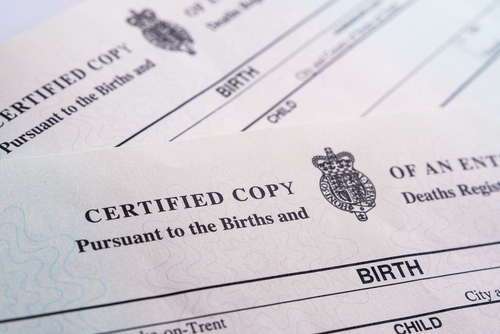ONS birth statistics are a vital part of monitoring demographic trends across England and Wales and help us plan a wealth of public services – from forecasting demand for maternity and child healthcare to planning school places, as well as understanding the unique social needs of different communities. We are always seeking to enhance the value of our outputs, and now, in collaboration with Department of Health and Social Care, we have released the inaugural quarterly births output. Here Dr Claire Sellwood Green outlines the importance of this new dataset…
Our births data encompasses a wide range of information, from numbers of live births, still births and fertility rates, to important demographic details such as the age of the mother, ethnicity and socio-economic factors. These complex and nuanced data allow us to paint a picture of how our population is growing and changing across the generations, such as the average age we are starting families, how many children we choose to have, and which areas have the highest and lowest birth rates.
Where it all began
The ONS publishes hundreds of vital national statistics each year, but few with a publication record spanning almost two centuries. The first Annual Report of the Registrar-General of Births, Deaths and Marriages in England was published in 1839 (Wales was later added to the title page). These data have been collected, analysed and published by various government departments for 185 years with the responsibility with the ONS since 1996. As we work towards producing the 186th annual Births in England and Wales publication later this year, we continue to drive forward improvements to this rich set of data.
Enhancing our birth statistics
As outlined previously, in 2024 we participated in a joint consultation with the Department of Health and Social Care (DHSC) on health and social care statistics provision. Following feedback gathered from this consultation we have now streamlined our annual births publication, transforming two publications and three datasets into one comprehensive bulletin accompanied by two datasets. This change in the publishing rhythm allows us to produce our statistics in a timelier manner and means our outputs are better formatted for data analysis.
Our improvements don’t end there. One of the lessons learned during the pandemic is that the health landscape can change rapidly, and we must be able to respond with equal pace. To support timely monitoring of DHSC’s and the NHS’s ambition to improve maternity and neonatal safety, we have now published our inaugural quarterly births release. This gives provisional quarterly live births, stillbirths, maternities and stillbirth rate by gestational age, age of mother at birth, area deprivation, and ethnicity for England and Wales. For the first time the ONS will publish within-year births data, ensuring that stakeholders, policy makers and healthcare planners have access to the most current information available.
What do the new data show?
Our first release in this new quarterly series includes provisional data for Quarters 1 (January to March), 2 (April to June) and 3 (July to September) 2024. As the data is provisional and could be impacted disproportionally by late registrations, we cannot make any official conclusions about trends in the data. However, we can begin to predict what those trends may be when the confirmed data is released later this year.
Initial counts for England suggest there may have been slightly more live births in Q3 (145,147) than Q1 and Q2 (140,933 and 140,542, respectively). A similar pattern is observed in Wales, with increasing birth counts as the year progressed (Q1 = 6,671, Q2 = 6,763, Q3 = 6,936). Conversely, stillbirth rates appear at their lowest in Q3 for both England (3.5 stillbirths per 1000 births) and Wales (3.7 stillbirths per 1000 births), perhaps as a result of higher live birth counts. A full analysis will be provided in the next annual bulletin.
What’s next?
Our next release will be the annual Births in England and Wales publication scheduled for Spring 2025, where all four quarters of confirmed data for 2024 will be provided. Following this, provisional birth data for 2025 and beyond will be published with approximately one quarter delay.
As this is the first iteration of quarterly births, we are welcoming feedback from our users on this release. If you have questions or comments on this data set or any of our child health statistics, please contact us at health.data@ons.gov.uk.
Head of Child and Lifetime Health Monitoring, ONS
